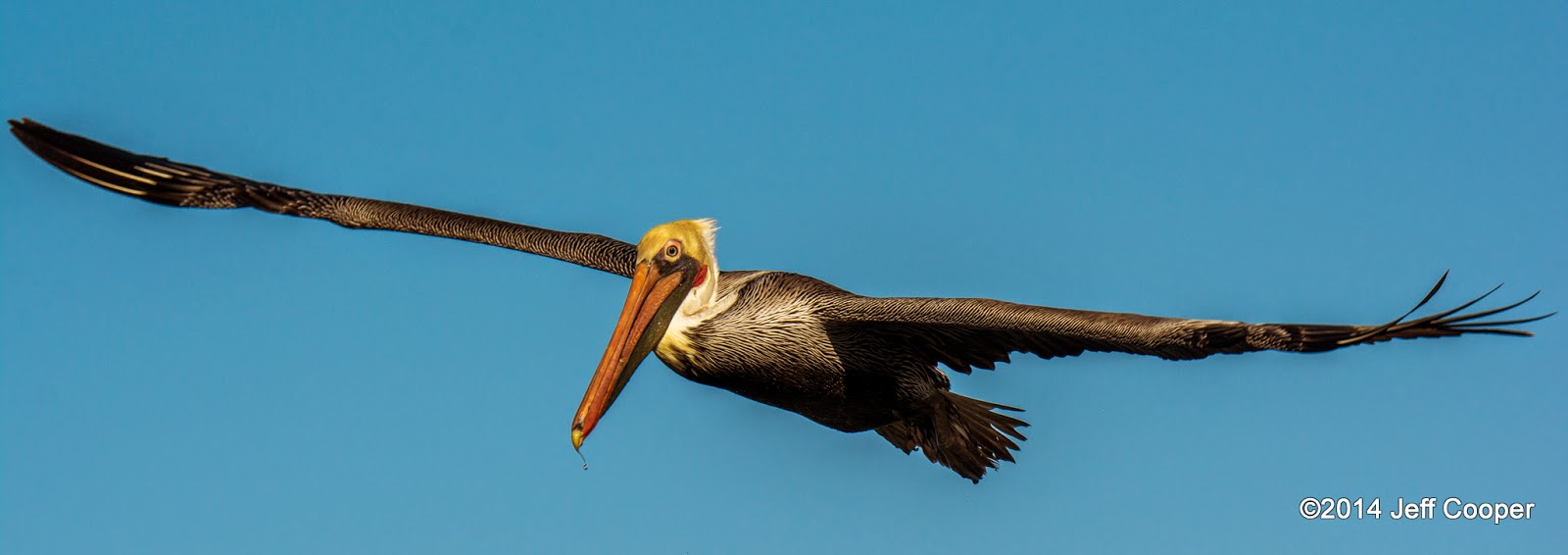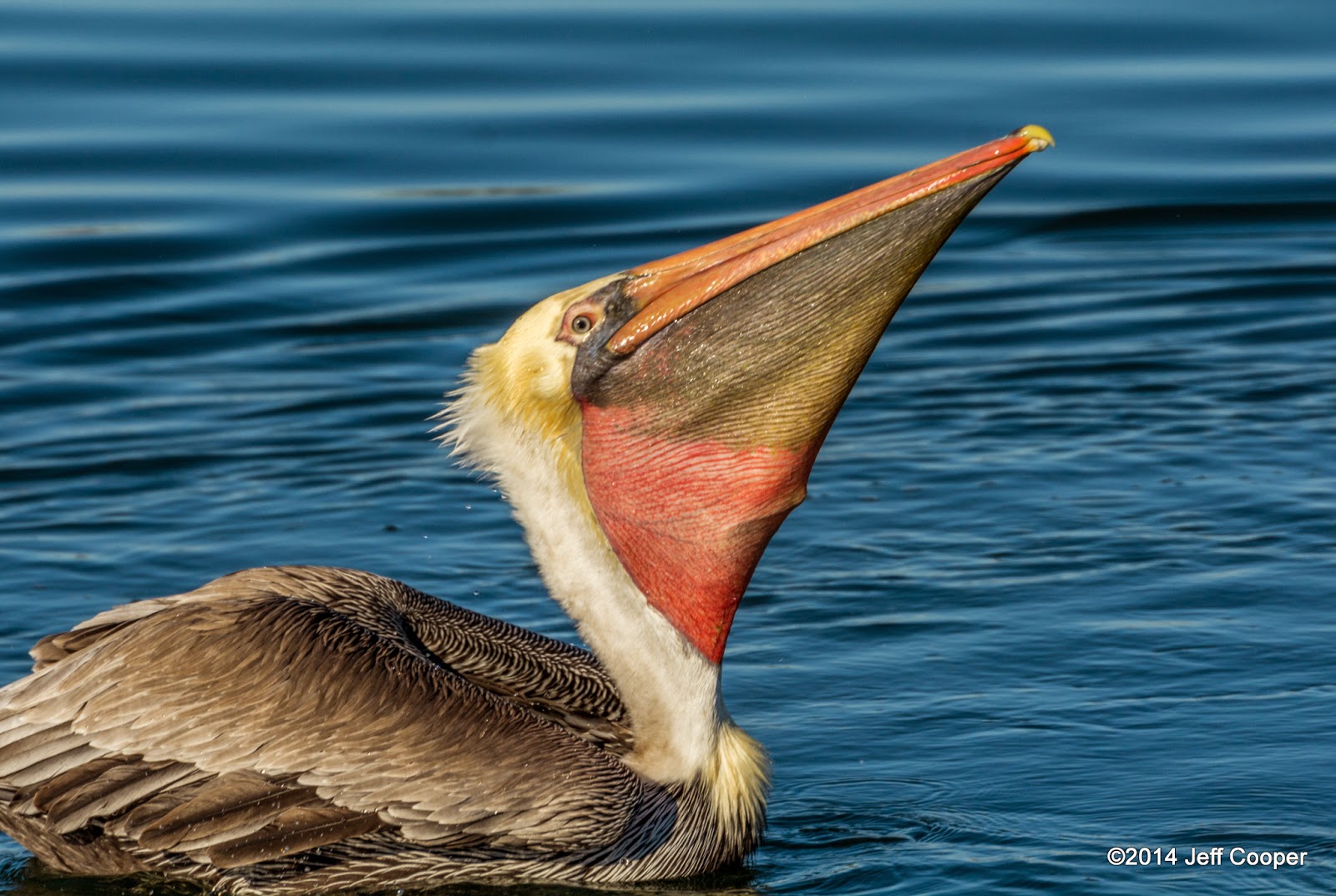Pelicans are large, with wings spans reaching 6.5 feet, and fly rather gracefully. They can often be seen gently cruising just inches above the surface of the water. I enjoyed watching their smooth flight as they came and went before me. The following series shows one approaching my position. You can see water dripping from the tip of its bill. Eventually there is a single drop just below the bird's bill. The last image of the series also shows the webbing between the toes. This webbing makes them strong swimmers. My understanding is that Pelicans are the only birds to have webbing between all four toes.
I tried to capture some video as the pelicans did their plunge diving, but it was hard to track their flight and keep them in the frame while the lens was zoomed. I'll know better how to capture video if I get the chance again, but I did capture a few images of birds in various stages of the plunge dive. The first image shows the bird beginning to break it's glide with a sudden bank to its left.
Pelicans essentially dive to just below the surface of the water. Their body's are not fully immersed. Their pouch expands to take in water and hopefully fish. After emerging the pelican hangs the bill down to allow water to drain and then tilts the head back to swallow the food. Not all of the catch from a dive is retained as the pelican allows water to drain from its pouch. An empty shell and small fish fell from this bird's pouch as it was in the process of tilting the head back for a swallow.
The small bulges in the pouch below are formed by the fish and debris that are gathered during a dive. Part of one small fish can be seen near the tip of the bill.
And it is too late at this point for anything in that pouch to return to the water before it is fully digested. I like this view of the pouch and its structure. You can see the folds that allow the pouch to expand and fold down as needed. That hook on the tip of the bill helps the bird to hang onto slippery fish.
I watched one bird as it preened between dives. I was surprised by how it could twist and turn itself into a "pelican pretzel". Can you imagine getting your mouth to your back?
I captured a number of images I'd like to share, but I'll finish with a portrait, a landing, and a wing stretch.


















No comments:
Post a Comment